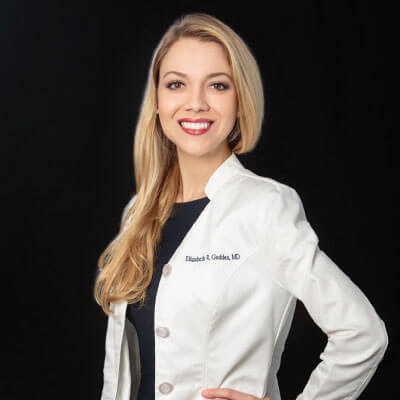If you purchase a product through a link in this article we may receive a portion of the sale.
Answers to all your beauty questions. Our resident dermatologist, Dr Geddes Bruce, talks about the biggest beauty topics, from hair loss to Botox and everything in between. Send us a DM @camillestyles Please let us know with your burning questions and we may address it in a future column.
Say it with me: Sun protection is sexy. Sunscreen for all skin types On the market – and a new class self tanner Giving you a natural glow without the sunburn – staying protected is easier than ever. Face sunscreens can be tinted, Reapplied over makeupAnd they’re packed with the benefits of serums. Body sunscreens are no longer sticky and flimsy, but are often the final step in a bodycare routine for glowing skin. This probably goes without saying, but sunscreen is one of my favorite parts of my beauty routine.
A dermatologist busts the biggest myths about sunscreen
Q: I’m overwhelmed by everything I hear about sunscreen. I know I should wear it every day and reapply it often… but how often? And how do I make sure I’m choosing the right sunscreen?
Social media has played a huge role in making sunscreen fun — and, dare I say, cool. But it can also make it complicated. It’s easy to feel overwhelmed looking at all the product options and application tips. A lot of sunscreens are more style than SPF, and it can be hard to determine which ones are actually worth the money.
To cut through the noise and keep you updated, we consulted our resident dermatologist, Dr. Geddes-Bruce. Of course, she has a lot to say on the subject. “Unfortunately, we are entering an age of misinformation,” says Dr. Geddes. “There is a lot of fear mongering about the dangers of sunscreen these days. Fraudsters post false claims about the dangers of sunscreen and it spreads like wildfire.”
Despite all the misinformation online, sun prevention is easy. “Sunscreen is a remedy that protects our skin from exposure to excessive ultraviolet radiation, which is the biggest cause of skin cancer,” says Dr. Geddes. It’s as simple as that.
Ahead, Dr. Geddes tells us everything we need to know about sunscreen in 2024. Get ready to discover the best dermatologist-approved sunscreens — and how to use them, too.

Dr. Elizabeth Geddes-Bruce
Dr. Geddes is a board-certified dermatologist and dermatologic surgeon at Westlake Dermatology, specializing in the practice of both cosmetic and medical dermatology. She views cosmetic dermatology as synergistic to a happy, healthy lifestyle and regularly counsels her patients on a balanced, natural approach to both cosmetic and medical dermatology.

Chemical vs. Physical Sunscreens
“Both chemical and physical sunscreens block ultraviolet radiation from damaging the DNA of skin cells. There’s no one type that’s better than the other—both have their pros and cons,” says Dr. Geddes.
“The best sunscreen is the one you use correctly.”
Ultimately, the difference between physical and chemical sunscreens lies in the ingredients they use to protect the skin from the sun’s rays. Take a look at each option below and decide which one might be best for you.
Physical Sunscreen
Physical sunscreens (also called mineral sunscreens) form a protective layer on your skin using ingredients like titanium dioxide, iron oxides, and zinc oxide.
These ingredients cause the dreaded white cast that has led many people to use chemical sunscreens. However, new formulas and color options may make physical sunscreens easier to use.
“Mineral sunscreens are great for some people, but they leave a white cast on the skin, which is undesirable for people with melanin-rich skin. So, there’s a large portion of the population that struggles with pigmentation issues and could benefit from sunscreen. But if they think mineral sunscreen is the only option, they don’t have a great choice.”
If you’re opting for a physical sunscreen, consider our editor-approved options.

Chemical Sunscreens
To protect the skin, chemical sunscreens use a combination of organic filters such as:
- avobenzone
- Octocrylene
- 2-Ethylhexyl Salicylate
- Ensulizole
- Maradimate
- Sulisobenzone
Since chemical sunscreens don’t form a physical barrier against the sun like mineral sunscreens do, be sure to wait 15 minutes after applying it before going out in the sun. And just because a sunscreen is chemical doesn’t mean it’s bad for your skin.
“There’s a lot of chemophobia on the internet. People don’t trust anything made with “chemicals,” and that’s true for chemical sunscreens, too. In turn, inorganic sunscreens are promoted as the only safe option, which simply isn’t true,” says Dr. Geddes. “There’s no need to underestimate the aesthetically beautiful option—organic sunscreens—especially for people with skin of color.”
When choosing a chemical sunscreen, read the ingredient label first. Make sure your product does not contain the following:
- Oxybenzone
- Octinoxate
- Octisalate
- Octocrylene
- Homosalate
- Parabens
Best Hybrid Sunscreen
If you want the benefits of chemical sunscreens with the physical screens used by mineral SPFs, many new sunscreens are using hybrid formulas that combine zinc with protective chemicals.

How to apply sunscreen correctly
“Apply the right amount [of sunscreen] and reapply every 2-3 hours or any time after water exposure/excessive sweating,” advises Dr. Geddes.
But how much is enough? “Typically, when we put sunscreen on our skin, we don’t use enough,” says Dr. Geddes. “Studies have shown that the way we apply it gives us about ¼ of the SPF that’s listed on the label. So, choosing an SPF with a higher SPF may give you more protection.”
You should use about a teaspoon or 5ml of sunscreen for your face, ears and neck. The three-finger rule is a good guide. Squeeze out enough sunscreen to cover the length of three fingers, then spread it evenly.
“If you’re concerned about aging, skin appearance or skin cancer risk, an ideal sunscreen routine would be to apply your favorite sunscreen to your face and neck daily after your morning skincare products, no matter the weather. If you’re spending time outside, make sure you reapply every 2-3 hours.”
The last word? Apply and then reapply (and then reapply. “A double application of sunscreen is a good way to ensure you’re getting enough initial coverage and upon reapplying. But honestly, any reapplication is better than nothing!”
A Brief Info on SPF Makeup
Every product these days has SPF—something or the other. tinted foundation Face mists and even SPF eyeshadows. These products are a great way to add SPF to your routine, but they shouldn’t be your only source of sunscreen.
“Newer products that combine makeup and sunscreen offer a small amount of UV protection, but it’s unlikely that you’ll apply a thick enough layer of makeup to get the SPF stated on the bottle,” says Dr. Geddes. “Most people don’t wear such heavy makeup. So, it’s best to layer a separate sunscreen underneath your makeup.”

Why shouldn’t you combine SPF with other products?
“It’s not a good idea to mix your sunscreen with a moisturizer,” says Dr. Geddes. SPF in products like moisturizers and makeup is formulated to protect you. However, mixing the two can reduce your protection and render the formula inactive.
“There’s no guarantee that you’re mixing it in evenly, and you’ll interfere with the inherent properties of the formulation that allow it to form a protective film layer. Ideally you apply your moisturizer first, then your sunscreen on top of that.”
Instead, use products containing SPF — though, as mentioned above, don’t rely on them to be your only protection.

Sunscreen innovations to try in 2024
There are new innovations in SPF coming out every day, and some of them are more promising than others. One new SPF trend: sun patches. These, like pimple patches, wrinkle patches or eye patches, sit on top of the skin and act as a physical shield from the sun.
“Sun patches are an exciting new form of photoprotection. They can provide reliable all-day coverage just like UPF clothing and can be a great addition for someone who spends a lot of time outdoors. The problem is that many of them are highly visible, coverage is limited (so you’ll still need sunscreen), and they can be expensive, not to mention that one-time use patches are useless.”
Myths related to sunscreen that should be discarded
“One of the most bizarre and potentially harmful trends I’ve seen on social media is homemade sunscreen recipes. You can’t effectively make your own sunscreen in your kitchen and expect it to work. Use tried and tested products.”
Other myths say sunscreen is bad for you — or worse, tell you not to apply it. While sunscreen is the main (and best) source of sun protection, it’s not the only source. “If you really want to avoid sunscreen, wear a big hat and sunglasses, and wear photoprotective clothing, and avoid peak sun hours (between 10 and 2 p.m.).”
do-you-believe-these-sunscreen-myths-a-dermatologist-separates-fact-from-fiction




